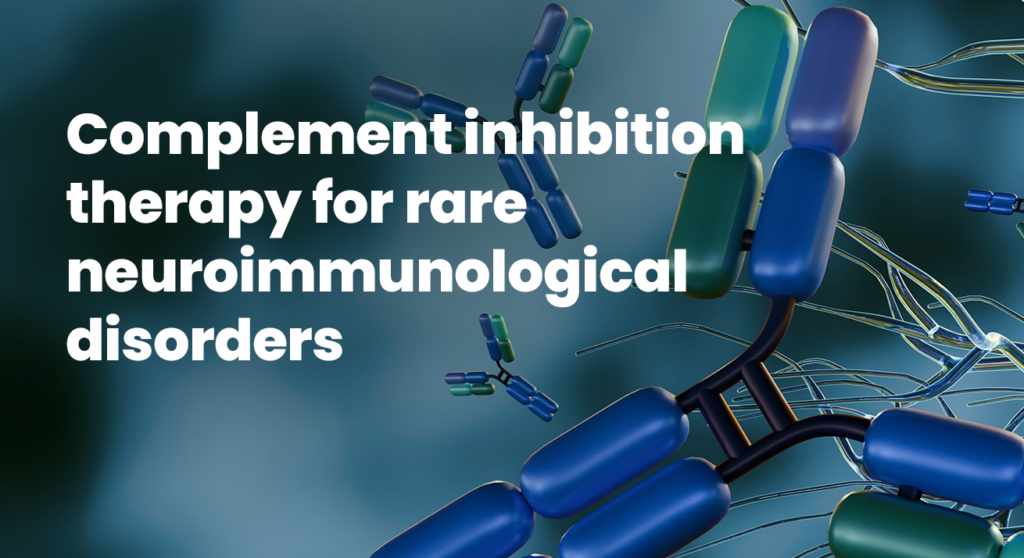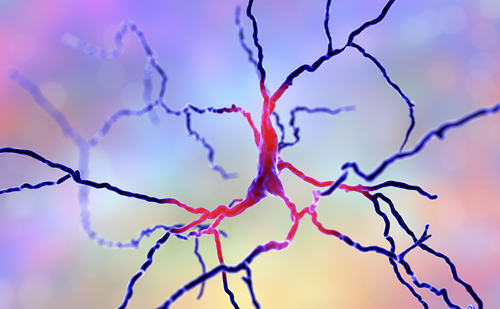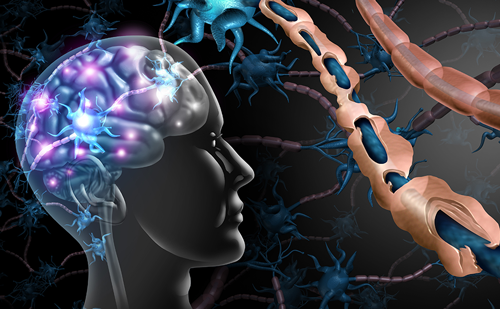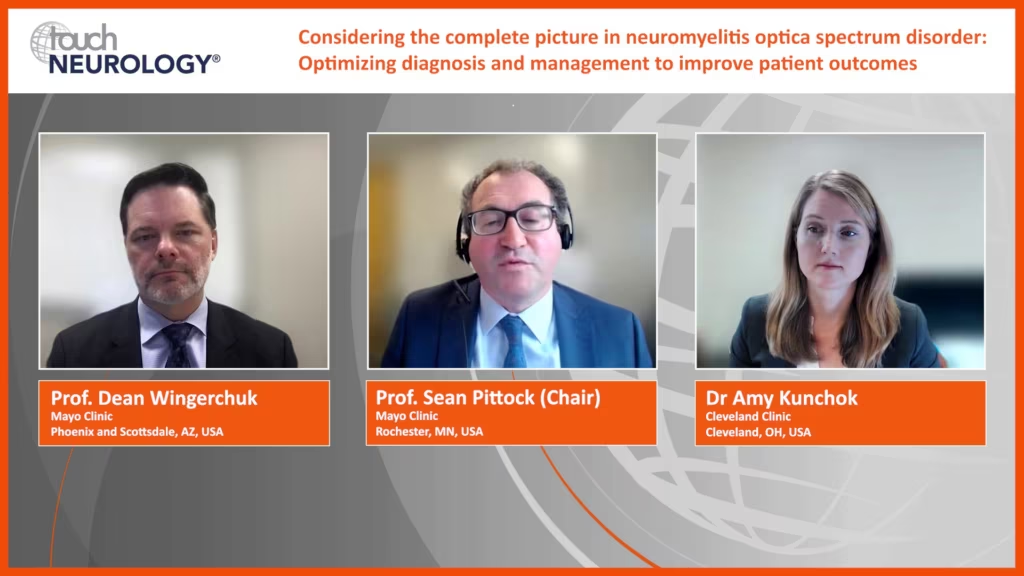Search Results
Showing Results for NMOSD

This content is sponsored by Alexion, AstraZeneca Rare Disease.
Leading experts discuss clinical evidence and real-world experience with complement inhibition therapy in the rare autoimmune disorders AChR-Ab+ gMG and AQP4-Ab+ NMOSD.
AQP4-Ab+, anti-aquaporin-4 antibody-positive
gMG, generalised myasthenia gravis
NMOSD, neuromyelitis optica spectrum disorder
M/GL/UNB-g/0030 02/2025 Date of Preparation: February 2025

A neurologist and a neuro-ophthalmologist discuss best practices for early diagnosis and treatment of NMOSD








Young people in YPN advocate for the inclusion of youth in decision-making processes at national and European levels. They engage in EU-wide discussions, collaborate with national MS societies, and, supported by EMSP, participate in the European patients' movement. This includes attending high-level meetings at the European Parliament, participating in public health events, and running impactful social media campaigns by sharing personal stories.

Welcome to the latest edition of touchREVIEWS in Neurology. We are excited to present a collection of articles that showcase the latest advancements and diverse perspectives in neurological research and treatment. This issue features insightful reviews and editorials from esteemed ...

Neuromyelitis optica spectrum disorders (NMOSD) are a group of relapsing autoimmune diseases of the central nervous system. The clinical hallmarks of NMOSD are myelitis and optic neuritis; however, a wider clinical spectrum has been recognized.1 The majority of patients with ...

Neuromyelitis optica spectrum disorder (NMOSD) is a rare inflammatory autoimmune disease of the central nervous system (CNS) with a worldwide distribution.1 The first clinical description of NMOSD was made a century ago by Devic and Gault, who documented patients with ...

Watch specialists in neurological disorders share their insights on the role of complement and complement therapeutics in patients with neuromyelitis optica spectrum disorder (NMOSD) and myasthenia gravis (MG).

Multiple sclerosis (MS) is a chronic, immune-mediated disorder of the central nervous system characterized by inflammation, demyelination and neurodegeneration. Natalizumab is a widely used anti-α4 integrin inhibitor for treating highly active MS. In the pivotal trials of natalizumab for MS, ...

Three experts examine evidence-based approaches for early and accurate diagnosis, appropriate treatment selection and patient-centred care to mitigate the clinical burden of neuromyelitis optica spectrum disorder.

CHAMPION-NMOSD (NCT04201262) is a study of ravulizumab in adults with anti-aquaporin-4 antibody-positive neuromyelitis optica spectrum disorder. Ravulizumab binds to the same complement component 5 epitope as eculizumab; however, its longer elimination half-life extends the dosing interval (every 8 versus 2 weeks). In this ...

Acute disseminated encephalomyelitis (ADEM), first characterized in 1931,1 is a non-specific clinical syndrome of polyfocal central nervous system (CNS) inflammatory demyelination; it is characterized by encephalopathy and large, poorly demarcated cerebral white matter lesions.2,3 Myelin oligodendrocyte glycoprotein (MOG) antibody-associated disease (MOGAD), ...

Over the past two decades, monoclonal antibodies targeting the surface antigen CD20 have emerged as highly effective disease-modifying therapies (DMTs) for multiple sclerosis (MS).1 The major mechanism of action of these therapies is via B-cell depletion, as CD20 is expressed ...

The CHAMPION-NMOSD trial (NCT04201262) is a global, open-label, multicentre, phase 3, externally controlled study of ravulizumab in adults with anti-aquaporin-4 antibody-positive neuromyelitis optica spectrum disorder (NMOSD). In this touchNEUROLOGY interview, we caught up with Prof. Sean Pittock (Mayo Clinic, Rochester, MN, ...

The CHAMPION-NMOSD trial (NCT04201262) is a global, open-label, multicentre, phase 3, externally controlled study of ravulizumab in adults with anti-aquaporin-4 antibody-positive neuromyelitis optica spectrum disorder (NMOSD). In this touchNEUROLOGY interview, we caught up with Prof. Sean Pittock (Mayo Clinic, Rochester, MN, ...

Paediatric-onset multiple sclerosis (POMS) is the symptom onset and diagnosis of multiple sclerosis (MS) before the age of 18.1 Diagnostic criteria were revised by the International Pediatric MS Study Group in 2013. Compared to patients with adult-onset MS (AOMS), young patients are ...

Aquaporin 4-immunoglobulin G (AQP4-IgG) plays a major role in the pathogenesis of neuromyelitis optica spectrum disorder (NMOSD). Prof. Jeffrey Bennett (University of Colorado School of Medicine, Aurora, CO, USA) discusses the challenges in the treatment of NMOSD. Questions: What ...

Satralizumab is a humanized monoclonal antibody medication that is used for the treatment of neuromyelitis optica spectrum disorder (NMOSD), a rare autoimmune disease, with Aquaporin 4-immunoglobulin G (AQP4-IgG+) playing a major role in its pathogenesis. Prof. Jeffrey Bennett (University ...

Watch three leading experts discuss diagnosis, treatment and care provision for patients with neuromyelitis optica spectrum disorder (NMOSD), with updates on the latest data for immunotherapy treatment options and guidance on how to support the holistic management of patients through multidisciplinary teams.
Latest articles videos and clinical updates - straight to your inbox
Log into your Touch Account
Earn and track your CME credits on the go, save articles for later, and follow the latest congress coverage.
Register now for FREE Access
Register for free to hear about the latest expert-led education, peer-reviewed articles, conference highlights, and innovative CME activities.
Sign up with an Email
Or use a Social Account.
This Functionality is for
Members Only
Explore the latest in medical education and stay current in your field. Create a free account to track your learning.

